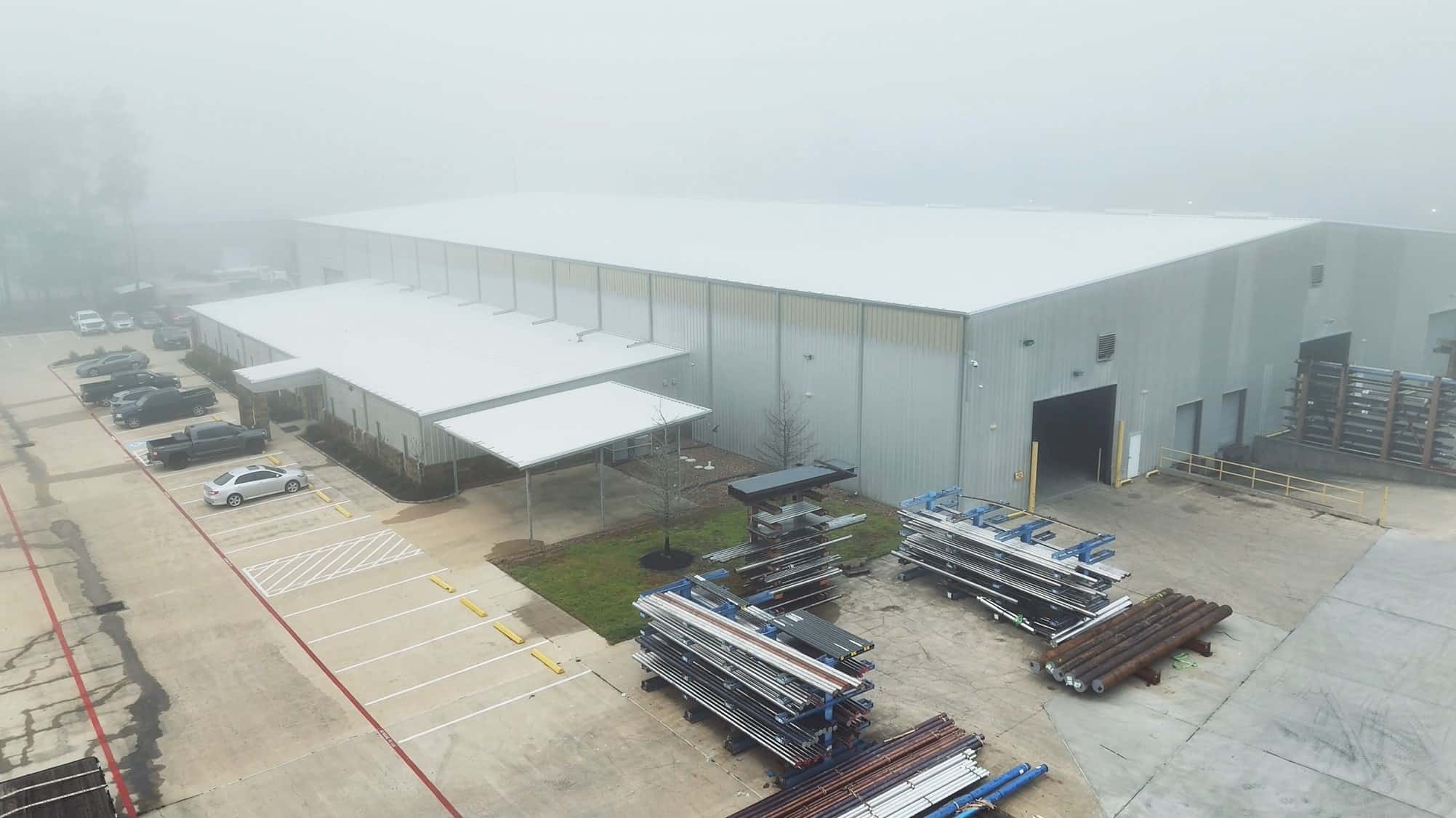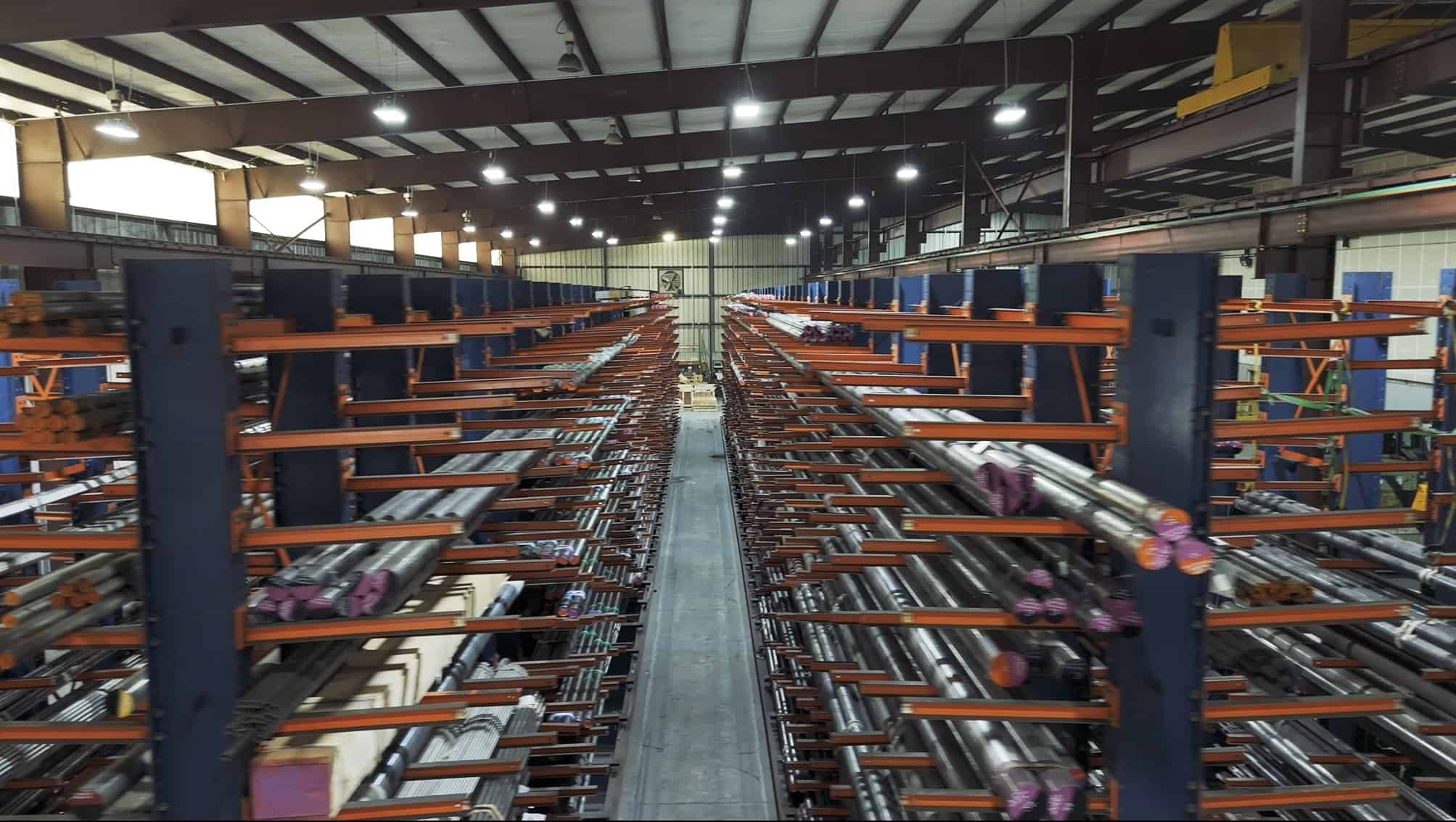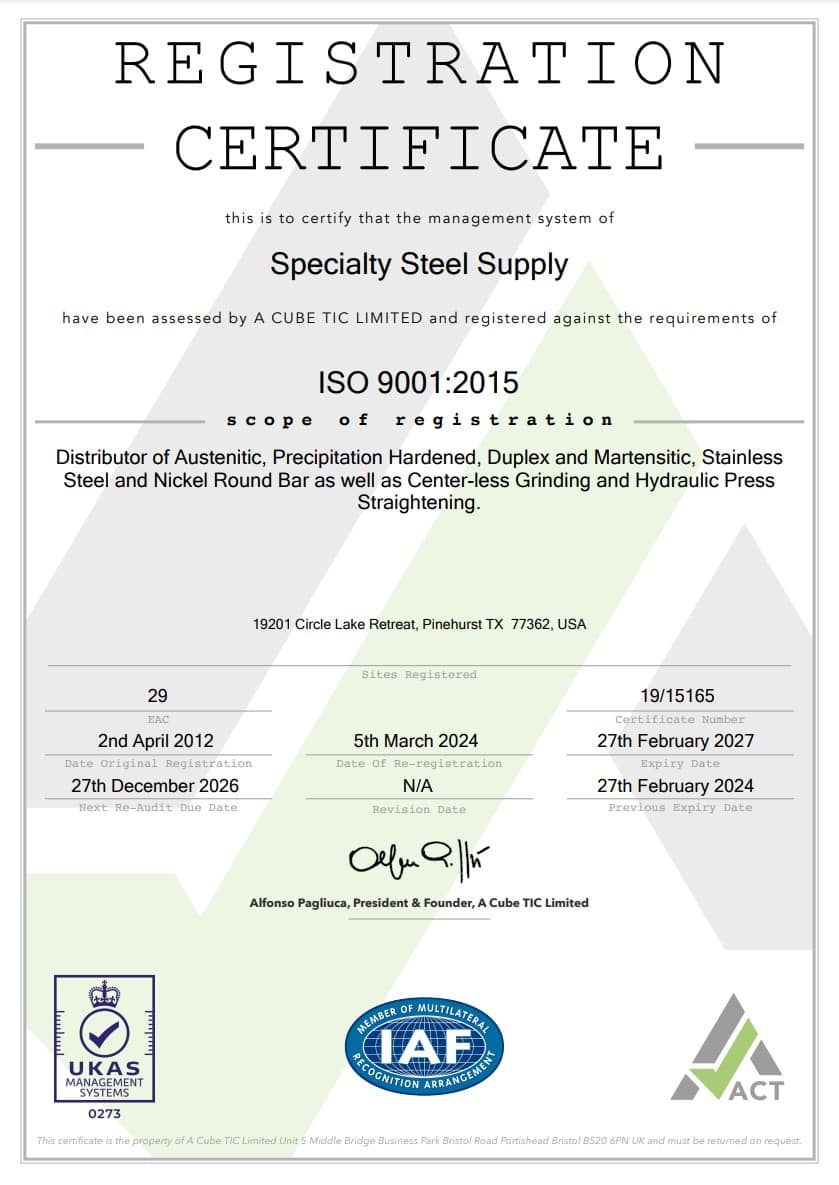Stainless Steel Distribution Leaders
About Specialty Steel SupplyStainless Steel Distribution Leaders
About Specialty Steel Supply
Specialty Steel Supply Inc. is one of the largest distributors of austenitic, precipitation hardened, duplex and martensitic stainless steels. We have a wide range of products and types of stainless steel round bar and our well trained staff offers many years of experience in all aspects of the steel industry. Our ability to procure and source metals from all parts of the world allows us to stay competitive in a global marketplace. We are committed to developing and servicing just in time inventory programs. Specialty Steel Supply handles stainless steel distribution for much of the United States.
Specialty Steel Supply is an industry leader in processing and distribution of specialty alloy-based materials and process solutions for critical applications in the aerospace, defense, energy, and industrial markets.
Specialty Steel Supply operates from a 70,000 square-foot warehouse with 8,000 square-foot of office space located in Pinehurst, Texas, a community about 40 miles northwest of central Houston.
Specialty Steel Supply opened
Turning, grinding, and equipment acquired
Specialty Steel Supply sold to Latrobe Steel to boost presence in steel in oilfield.
Carpenter Technology acquires Latrobe Steel
Rustless Adventures LLC acquires assets of Specialty Steel Supply
Nickel products added to Specialty Steel Supply line of material to service oil and gas and aerospace markets
1000 ton Hydraulic press added
Additional long bed Lathe added to processing.
Waterjet processes added to compliment growth in plate and nickel alloys.
DIFFERENTATION
Synergy
Synergy
Synergies with products and in-house services including meeting complex specificationsExperienced
Experienced
Experienced staff with extensive knowledge in the industryDominance
Dominance
Well-established market dominance on certain product segmentsLarge Inventory
Large Inventory
Large inventory of hard to find itemsSpecialty Steel Supply
have been assessed by A CUBE TIC LIMITED and registered against the requirements of
ISO 9001:2015
scope of registration
Distributor of Austenitic, Precipitation Hardened, Duplex and Martensitic, Stainless Steel and Nickel Round Bar as well as Center-less Grinding and Hydraulic Press Straightening.
REPRESENTATIVE CUSTOMERS







Mission Statement
Our mission is to leverage our core technical strength in engineered materials to meet and exceed our customers’ current and future requirements. We provide value-added solutions to our customers’ applications to solidify our position as the preferred provider of premium corrosion resistant alloys providing our customers with a competitive advantage.
Our Vision
To be the preferred solutions provider in specialty materials with a reputation for zero injuries, unquestionable quality, intimate customer connections, innovative growth, creative technology, and engaged talent. We embrace our role in the manufacture of mission critical never-fail products and behave in a passionate manner that will inspire our communities, customers, and investors. We will compete tirelessly to become and remain an irreplaceable partner in the supply chains where we participate.
GUIDING PRINCIPALS
Zero Injury Workplace
Leader in Our Industry
Continuous Improvement
Sense of responsibility
Innovation
Collaboration
Integrity & Ethics
Performance
Stainless and Alloys
We collaborate to help you exceed requirements by bringing your best ideas forward and eliminating non-conformance.

Specialty Steel Supply Inc. is one of the largest distributors of austenitic, precipitation hardened, duplex and martensitic stainless steels. We have a wide range of products and types of stainless steel round bar and our well trained staff offers many years of experience in all aspects of the steel industry. Our ability to procure and source metals from all parts of the world allows us to stay competitive in a global marketplace. We are committed to developing and servicing just in time inventory programs.
Specialty Steel Supply
19201 Circle Lake Drive
Pinehurst, Texas 77362
info@specialtysteelsupply.com
Business Hours
Sunday - Closed








